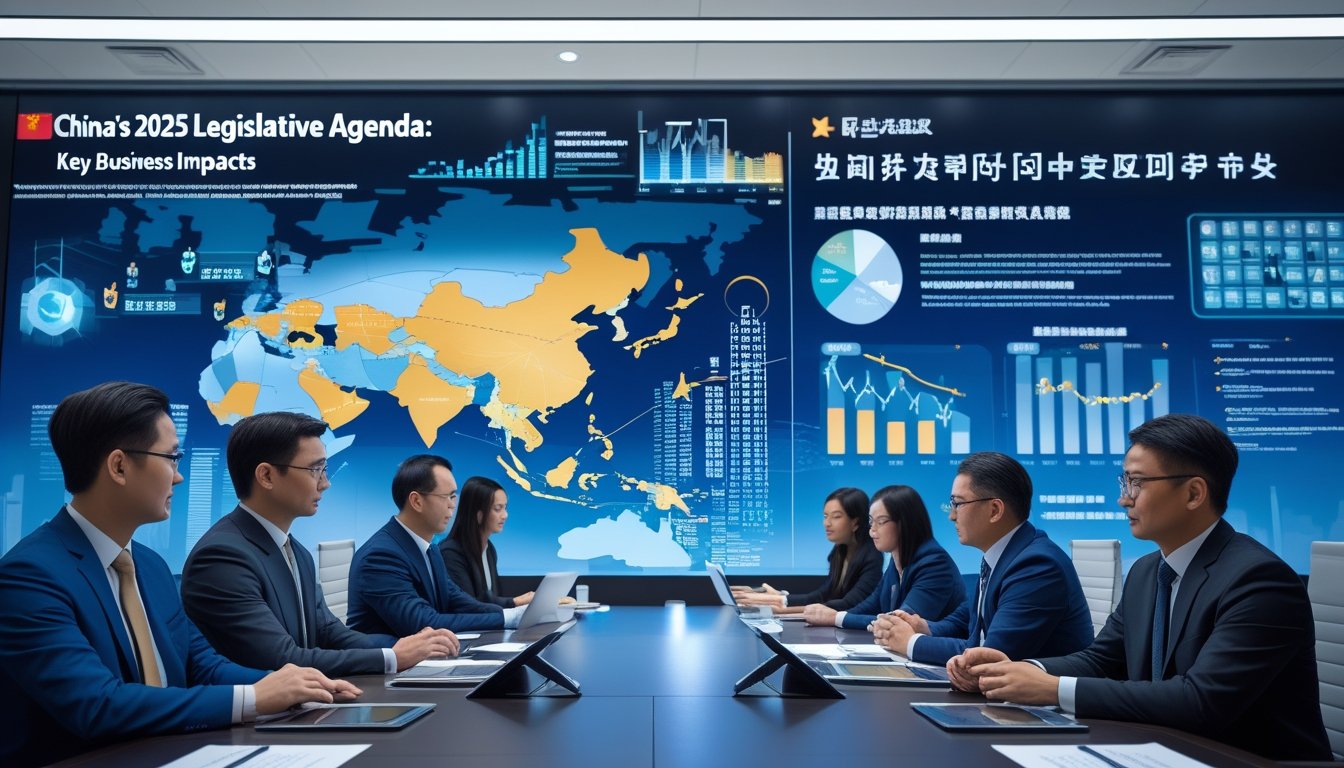The inception of Free Trade Zones (FTZs) in China marked a significant milestone in the country's economic reform and openness to international trade. At China Legal Experts we will study the rationale behind the creation of these zones and how they serve as powerful engines for economic development. This blog post explores the purposes and advantages of China's FTZs, addressing why they have become a focal point for businesses looking to tap into the lucrative Chinese market.
Catering to savvy entrepreneurs and multinational corporations alike, our analysis clarifiesthe strategic intent of FTZs in fostering an advantageous trade environment. We'll highlight the direct benefits your business can leverage from operating within these zones—from tax incentives to streamlined customs procedures.
Join us in uncovering the reasons behind the establishment of China's Free Trade Zones, and understand how they could be instrumental in your business expansion or entry strategy.
Historical Context of Chinese Economic Reform
Deng Xiaoping's Reform and Opening-Up
In 1978, Deng Xiaoping initiated a series of economic reforms that marked a significant turning point in the history of the People's Republic of China. Deng's reforms aimed to modernize the economy, increase productivity, and improve the standard of living for the Chinese people. The policy of economic liberalization and opening up to the world markets was implemented to achieve these goals.
Evolution of Special Economic Zones
One of the most significant outcomes of Deng's reforms was the creation of Special Economic Zones (SEZs) in China. SEZs were established in the early 1980s to attract foreign investment and promote economic growth. The first SEZ was set up in Shenzhen in 1980, followed by Zhuhai, Shantou, and Xiamen.
SEZs were granted special economic policies, including tax incentives, relaxed regulations, and other preferential treatment to attract foreign investors. These policies were designed to create a favorable environment for businesses to operate and to facilitate the transfer of technology and knowledge from foreign firms to the Chinese economy.
The success of SEZs led to the creation of more zones across the country, including Free Trade Zones (FTZs). FTZs were established in 2013 as part of China's efforts to further liberalize its economy and promote international trade. FTZs are designed to facilitate cross-border trade and investment, promote innovation, and foster economic growth.
Objectives of Establishing Free Trade Zones
China's decision to establish Free Trade Zones (FTZs) was driven by several objectives. These objectives include attracting foreign investment, promoting economic integration, and stimulating domestic demand.
Attracting Foreign Investment
One of the primary objectives of establishing FTZs in China was to attract foreign investment. By providing a more open and flexible environment for foreign investors, China hoped to increase the flow of foreign capital into the country. This was seen as a way to promote economic growth and development, as well as to help modernize the Chinese economy.
Promoting Economic Integration
Another objective of establishing FTZs was to promote economic integration. By creating zones where trade barriers were reduced or eliminated, China hoped to encourage greater trade and investment between itself and other countries. This was seen as a way to help China become more integrated into the global economy, and to promote greater economic cooperation between China and other countries.
Stimulating Domestic Demand
A third objective of establishing FTZs was to stimulate domestic demand. By creating zones where foreign investors could operate more freely, China hoped to create new opportunities for domestic businesses to supply goods and services to these investors. This was seen as a way to help boost domestic demand, which in turn would help to drive economic growth and development.
Operational Mechanisms of FTZs
Free Trade Zones (FTZs) are special economic zones that are established to promote trade and investment by providing a favorable business environment. The Chinese government created FTZs to attract foreign investment, promote trade liberalization, and accelerate economic growth. In this section, we will discuss the operational mechanisms of FTZs in China.
Regulatory Framework and Negative List
The regulatory framework of FTZs is designed to create a business-friendly environment. The negative list is a crucial component of the regulatory framework, which outlines the sectors that are restricted or prohibited from foreign investment. The negative list is regularly updated to reflect changes in government policies and economic conditions. The current negative list includes sectors such as telecommunications, education, and media.
Customs and Taxation Policies
Customs and taxation policies in FTZs are designed to promote trade and investment. The customs procedures are streamlined to reduce the time and cost of importing and exporting goods. The taxation policies are also favorable, with reduced tariffs and tax exemptions for certain industries. The General Administration of Customs and the State Administration of Taxation oversee the customs and taxation policies.
Currency Exchange and Financial Services
Currency exchange and financial services are crucial components of FTZs. The Renminbi (RMB) is the official currency of China, and FTZs provide a platform for internationalization of the RMB. The People’s Bank of China (PBOC) regulates the currency exchange policies in FTZs. FTZs also provide free trade accounts and other financial services to facilitate cross-border transactions. The State Administration of Foreign Exchange (SAFE) oversees the financial policies in FTZs.
Key Free Trade Zones in China
China's free trade zones (FTZs) have been established as testbeds for economic innovation and to facilitate import-export and international trade, offering duty-free import, export, and warehousing. Here are some of the key FTZs in China:
Shanghai Free Trade Zone
The Shanghai Free Trade Zone (SFTZ) was the first FTZ in China, established in 2013. It covers an area of 120.72 square kilometers and is divided into three areas: the customs supervision area, the bonded area, and the comprehensive service area. The SFTZ is designed to promote trade and investment, and it offers a more liberalized environment for foreign investors.
Guangdong Free Trade Zone
The Guangdong Free Trade Zone (GDFTZ) was established in 2015 and covers an area of 116.2 square kilometers. It is located in the Pearl River Delta, which is a major hub for manufacturing and trade. The GDFTZ is designed to promote trade and investment between China and its neighboring countries, such as Hong Kong and Macau.
Other Notable FTZs
In addition to the SFTZ and the GDFTZ, there are several other notable FTZs in China, including:
- Fujian Free Trade Zone
- Tianjin Free Trade Zone
- Zhejiang Free Trade Zone
The pilot free trade zones in China are also worth mentioning. These are areas that have been designated by the Chinese government as testbeds for economic innovation. There are currently 18 pilot free trade zones in China, including the SFTZ and the GDFTZ.
Economic Impact and Future Prospects
Contribution to China's GDP and Competitiveness
Free trade zones have played a significant role in China's economic development and growth. These zones have contributed to China's GDP by promoting trade and investment. According to the data, the contribution of FTZs to China's GDP has been increasing steadily. In 2020, Chinese FTZs contributed $400 billion in foreign trade, accounting for 13.5 percent of China's total foreign trade.
Moreover, free trade zones have also helped China to enhance its competitiveness in the global market. These zones provide a favorable environment for foreign investors to establish their businesses in China. As a result, China has been able to attract more foreign investment, which has boosted its economic growth and development.
Challenges and Opportunities
Despite the benefits that free trade zones offer, they also come with challenges. One of the most significant challenges is the integration of these zones with the rest of the economy. Although FTZs have been successful in attracting foreign investment, they have not been able to integrate fully with the domestic economy. This has created a gap between the FTZs and the rest of the country, which needs to be bridged.
Another challenge is the competition between different economic zones within China. There are currently 18 FTZs in China, which are competing with each other to attract foreign investment. This competition has led to a lack of coordination between the different zones, which has made it difficult for businesses to operate in multiple zones.
Despite these challenges, free trade zones in China offer many opportunities for foreign investors. These zones provide a favorable environment for foreign businesses to establish their presence in China. Additionally, they offer many advantages, such as tax incentives, simplified customs procedures, and streamlined administrative processes. These advantages make it easier for foreign businesses to operate in China.
Conclusion
In summary, China’s Free Trade Zones were established as part of a strategic economic initiative to bolster trade, attract foreign investment, and enhance the overall competitiveness of the Chinese market. These zones offer a myriad of benefits, including preferential policies, trade facilitation, and a more internationalized business environment, which can significantly benefit companies looking to expand their operations in Asia.
The FTZs are not just isolated economic experiments but integral components of China's broader vision for economic modernization and global integration. Understanding the full scope of their purpose and benefits is essential for any business strategy that involves China.
As you consider the advantages of Free Trade Zones, remember that they operate within the larger framework of Chinese trade regulations. To complement your knowledge of FTZs and to ensure your business is aligned with all aspects of China's trade laws, we invite you to explore our detailed article on China Export Controls. Stay informed with China Legal Experts, where we provide the expertise you need to navigate China’s complex legal landscape.
Frequently Asked Questions
Why was free trade introduced?
Free trade was introduced to remove barriers to international trade, such as tariffs and quotas. It allows countries to specialize in producing goods and services that they are most efficient in, while importing goods and services that they are less efficient in producing. This leads to increased economic efficiency and growth, as well as lower prices for consumers.
What is the main goal of free trade?
The main goal of free trade is to increase economic growth and efficiency by allowing countries to specialize in producing goods and services that they are most efficient in. This leads to lower prices for consumers and increased economic growth, as well as increased competition and innovation.
Why is China the largest exporter in global trade?
China is the largest exporter in global trade due to its large and growing manufacturing sector, as well as its low labor costs. China has invested heavily in infrastructure and technology, which has allowed it to become a major player in global trade. Additionally, China has implemented policies to encourage foreign investment and trade, such as the creation of free trade zones.
When did China join the free trade agreement?
China joined the World Trade Organization (WTO) in 2001, which opened up its markets to foreign trade and investment. Since then, China has signed numerous free trade agreements with other countries and regions, including the ASEAN-China Free Trade Area, the China-Australia Free Trade Agreement, and the China-South Korea Free Trade Agreement.
Who started free trade with China?
The United States established diplomatic relations with China in 1979, which led to increased trade and investment between the two countries. Other countries and regions have also established trade relations with China, leading to increased globalization and economic growth.
Subscribe to receive updates
Subscribe to receive the latest blog posts to your inbox every week.






